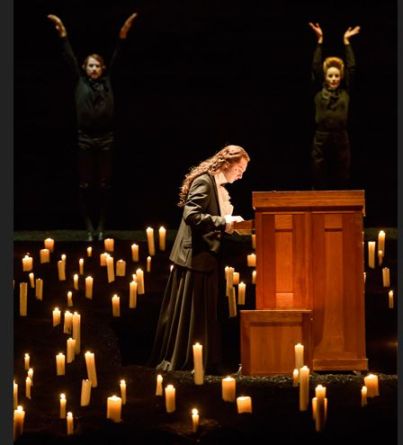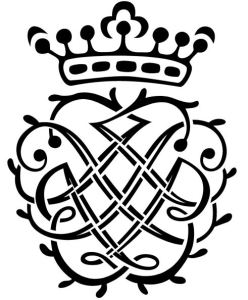Glyndebourne’s Saul
Glyndebourne Festival Opera. 6 August 2015
I don’t normally read other reviews until I have seen for myself, but I was aware that Glyndebourne’s new production of Handel’s Saul had gone down well. And well it should. It is one of the most successful productions that I have seen. Directed by Barrie Kosky, with designs by Katrin Lea Tag and lighting by Joachim Klein, the sumptuous settings and costumes would inevitably tick most opera-goers’ boxes. Of course, Saul isn’t an opera, but one of his finest oratorios, written in 1739 and the first of his collaborations with Charles Jennens. There is now a long tradition of staging oratorios, not least at Glyndebourne, dating back to 1996 and Peter Sellars’ Theodora. And with its dramatic story of family intrigue, love and hate, a youthful hero and a king loosing his mind, it certainly has all the dramatic possibilities of opera seria.

It starts in a manner that many such works end, with a triumphant series of choruses and arias, in this case in praise for the triumphant victory of the Israelites over the Philistines. As if to prove the point, the grotesquely bloodied head of Goliath lay centre stage. After this opening Epinicion (as it was described in the score), the roots of the subsequent action are played out in a series of recitatives after the arrival of a bashed and bloodied David – whose slaughter of Goliath was clearly not as simple as is usually thought. Saul’s two daughters and son react in different ways to the young hero. Michel immediately falls for him (O godlike youth), Merab mocks his ignoble birth while Jonathan swears everlasting friendship. In one of his several less-than-sensible moments, Saul offers David the hand, not of the besotted Michel, but of Merab, an offer immediately rejected by Merab on the grounds of David’s “poor plebeian parents”. The chorus of Israelites praise for both Saul and David is a further blow to Saul, when he hears the “upstart boy preferr’d before me”. And so things develop, as “Envy, eldest born of hell”, begins to take its terrible toll. Having, apparently, caused Saul’s anger, Saul is then called upon to sooth it, leading to one of the greatest of all Handel arias, David’s exquisite ‘O Lord, whose mercies numberless’, with its intense seventh leaps and ear-worm inducing five-note repeated motif at the end of the first phrase. This was followed by one of key instrumental moments, with Frances Kelly’s harp solo, played from a gallery at the side of the stage.
Mercifully shorn of any reference to Jewish, Georgian or modern history or politics, or the usual oratorio jingoistic nonsense, the production, despite many scenic distractions, concentrates of the developing (and declining) characters of the main protagonists. The opening setting is a sumptuous fancy-dress neo-Baroque fantasy acted out on the volcanic black sand of Lanzarote – or possible the ashes of some momentous battle. An enormous table setting festooned with flowers and dead things is peopled by the chorus and a curious be-ruffed court fool with taloned feet and clawed hands, who turns out to be a combination of three characters (High Priest, Abner, and Amalekit) as well as something of a Master of Ceremonies. He flits about, generally being weird.

There were several such moments of oddity, as predicted in the programme book essay about neo-baroque productions of baroque opera, helpfully reminding us that directors will sometimes do things for no apparent reason. But this flamboyant production never quite went over the top, although it came close to it at times. In fact it downplayed one aspect of Saul that many in a typical opera audience might have appreciated – the homoerotic aspect of Jonathan and David’s relationship. Jonathan manages a rather clumsily applied kiss, but is clearly rebuffed by David who immediately turns his attention to Michel.
The single interval divided the three acts into two, sensible creating the gap at Saul’s aside that his plan to send David to war as head of the army was in the hope that he would be killed. After our long picnic interval (during which the battle presumably took place), we are greeted by David’s victorious return, very much alive to the dismay of the increasingly erratic Saul. The second part saw all colour drained from the setting, although the opening scene is a spectacular display of candles filling the entire stage. From now on, it was the black ash/sand that dominated the stage.
Handel had a new organ built for the first performance, allowed him to direct the performance from the organ – presumably something akin to today’s continuo organs that he could see over the top of, rather than the tall chamber organs he had been used to. He clearly intended to show this, and his own keyboard skills off. So we had the rather unusual employment of a separate organ soloist for just two short pieces, as well as the usual continuo organ player. James McVinnie played the concerto-like organ solos in the third movement of the opening Sinfonia from the pit and, spectacularly (and in costume), the similar little organ concerto at the start of the second half, played on an organ revolving at some speed centre stage in the middle of the field of candles – an extraordinary visual spectacle.

Whatever the high jinks that opera directors get up to, for me it is the music that makes or breaks a performance. And this is what really made this a hit. Conductor Ivor Bolton is a consummate Handelian and has many years experience on working in opera, including cutting his musical teeth at Glyndebourne in his pre-conducting days. His involvement with the score and the characters that his singers were being asked to represent (rather than merely sing) was always apparent. It was noticeable that he reading of the opening Sinfonia was reflective and delicate, with no sense of the bombast that is often heard. The Orchestra of the Age of Enlightenment was on its inevitably wonderful form.

The vocal cast was extremely strong, with Iestyn Davies the undoubted star as David, the stunning purity of his countertenor voice combining with an incredibly mature approach to characterisation. Paul Appleby was the loyal, if potentially unfulfilled Jonathan, with Lucy Crowe and Sophie Bevan nicely contrasting the roles of the two sisters, Crowe’s Merub the spiteful demon, and Bevan’s naively bouncy Michel. Benjamin Hullett played the composite fool character. The performance that I attended was the first of only three with a pre-determined cast change, with Henry Waddington replacing Christopher Purves in the title role. My initial disappointment as not being able to witness what I am told was an outstanding performance by Purves soon turned to amazement at the extraordinary ability of Henry Waddington to so totally absorb the role he was performing for the first time. It was a staggeringly powerful portrayal of the decline of the tortured King. One of the most moving moments in the second part came with Saul’s Wretch that I am, sang as he stumbled alone in circles around the enormous black-floored stage.
This is bound to return to Glyndebourne Festival in future years. It is worth seeing.
[Photos: Bill Cooper]

One thought on “Glyndebourne’s Saul”